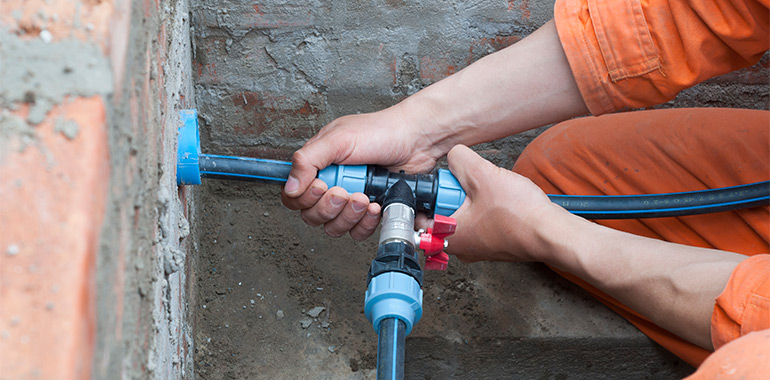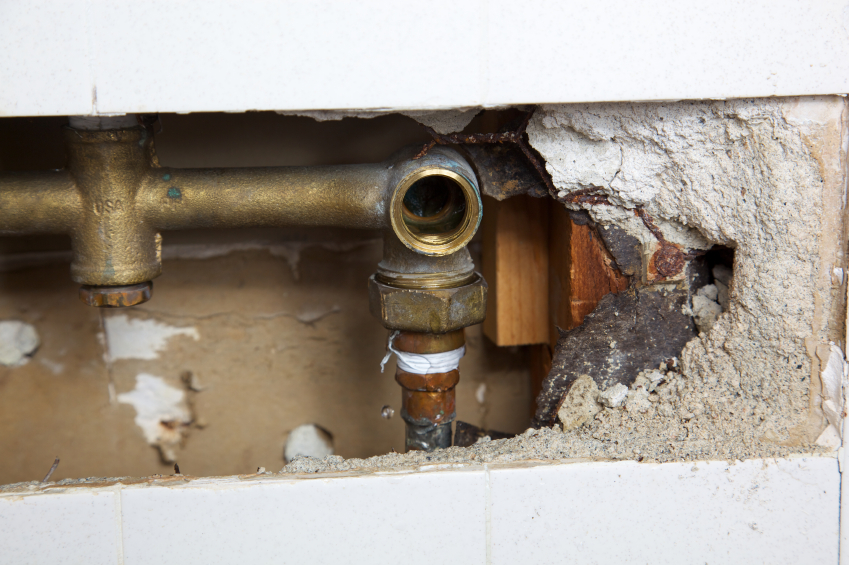Plumbing Sounds You Ought To Know About
Plumbing Sounds You Ought To Know About
Blog Article
They are making a number of good annotation about How To Fix Noisy Pipes overall in this article down the page.

To detect noisy plumbing, it is important to identify very first whether the unwanted noises occur on the system's inlet side-in various other words, when water is turned on-or on the drain side. Sounds on the inlet side have differed causes: too much water pressure, used shutoff as well as tap parts, poorly connected pumps or various other devices, incorrectly put pipe fasteners, and also plumbing runs including a lot of limited bends or other constraints. Noises on the drain side generally stem from bad area or, as with some inlet side noise, a format containing tight bends.
Hissing
Hissing sound that occurs when a faucet is opened a little generally signals extreme water stress. Consult your neighborhood water company if you presume this trouble; it will be able to inform you the water stress in your area as well as can set up a pressurereducing shutoff on the incoming supply of water pipeline if essential.
Thudding
Thudding noise, typically accompanied by trembling pipes, when a tap or home appliance shutoff is turned off is a condition called water hammer. The sound and also vibration are triggered by the resounding wave of pressure in the water, which unexpectedly has no location to go. Sometimes opening up a valve that discharges water promptly into a section of piping consisting of a constraint, elbow joint, or tee installation can generate the same condition.
Water hammer can normally be treated by mounting installations called air chambers or shock absorbers in the plumbing to which the problem valves or taps are attached. These devices allow the shock wave produced by the halted circulation of water to dissipate airborne they consist of, which (unlike water) is compressible.
Older plumbing systems might have short vertical sections of capped pipe behind wall surfaces on tap competes the same objective; these can eventually fill with water, reducing or destroying their effectiveness. The cure is to drain the water system completely by shutting off the major water supply shutoff and also opening up all taps. After that open up the primary supply shutoff as well as close the faucets one at a time, starting with the faucet nearest the shutoff and also finishing with the one farthest away.
Babbling or Shrieking
Intense chattering or shrieking that occurs when a valve or faucet is activated, which normally vanishes when the fitting is opened fully, signals loose or defective inner components. The option is to replace the valve or faucet with a brand-new one.
Pumps and also home appliances such as washing machines and dish washers can move motor noise to pipelines if they are poorly linked. Link such items to plumbing with plastic or rubber hoses-never inflexible pipe-to isolate them.
Various Other Inlet Side Noises
Creaking, squeaking, damaging, breaking, as well as tapping generally are brought on by the growth or contraction of pipelines, normally copper ones supplying hot water. The audios happen as the pipes slide versus loosened fasteners or strike neighboring home framing. You can usually determine the place of the problem if the pipelines are exposed; simply comply with the sound when the pipelines are making sounds. Most likely you will certainly find a loose pipeline hanger or a location where pipelines lie so near floor joists or various other framing pieces that they clatter versus them. Attaching foam pipeline insulation around the pipes at the point of contact must remedy the trouble. Make sure bands as well as hangers are safe and secure and give appropriate support. Where feasible, pipe bolts should be connected to huge architectural elements such as structure walls as opposed to to framing; doing so minimizes the transmission of vibrations from plumbing to surface areas that can amplify as well as transfer them. If connecting bolts to framing is inescapable, wrap pipelines with insulation or other durable material where they get in touch with bolts, and sandwich completions of new fasteners in between rubber washers when installing them.
Dealing with plumbing runs that suffer from flow-restricting tight or various bends is a last resource that should be carried out just after getting in touch with a skilled plumbing professional. Sadly, this circumstance is rather usual in older houses that may not have been developed with interior plumbing or that have actually seen numerous remodels, specifically by beginners.
Drainpipe Noise
On the drain side of plumbing, the chief goals are to remove surfaces that can be struck by falling or rushing water and to protect pipes to consist of inescapable audios.
In brand-new construction, bathtubs, shower stalls, bathrooms, as well as wallmounted sinks as well as containers must be set on or versus resistant underlayments to lower the transmission of audio via them. Water-saving commodes and also taps are much less loud than standard versions; mount them as opposed to older kinds even if codes in your location still allow making use of older components.
Drains that do not run up and down to the cellar or that branch right into horizontal pipe runs supported at floor joists or other framing present particularly troublesome sound troubles. Such pipelines are huge sufficient to emit considerable vibration; they also carry significant amounts of water, which makes the situation worse. In new building, specify cast-iron soil pipes (the huge pipelines that drain pipes bathrooms) if you can afford them. Their massiveness has a lot of the sound made by water going through them. Likewise, avoid routing drainpipes in walls shared with bedrooms and areas where individuals collect. Wall surfaces consisting of drains ought to be soundproofed as was explained earlier, using dual panels of sound-insulating fiberboard and wallboard. Pipelines themselves can be covered with special fiberglass insulation made for the objective; such pipelines have an impervious vinyl skin (occasionally consisting of lead). Results are not constantly acceptable.
WHY IS MY PLUMBING MAKING SO MUCH NOISE?
This noise indeed sounds like someone is banging a hammer against your pipes! It happens when a faucet is opened, allowed to run for a bit, then quickly shut — causing the rushing water to slam against the shut-off valve.
To remedy this, you’ll need to check and refill your air chamber. Air chambers are filled with — you guessed it — air and help absorb the shock of moving water (that comes to a sudden stop). Over time, these chambers can fill with water, making them less effective.
You’ll want to turn off your home’s water supply, then open ALL faucets (from the bathroom sink to outdoor hose bib) to drain your pipes. Then, turn the water back on and hopefully the noise stops! If you’re still hearing the sound, give us a call to examine further.
Whistles
Whistling sounds can be frustrating, as sometimes the source isn’t easily identified. However, if you can pinpoint which faucet or valve that may be the cause, you’ll likely encounter a worn gasket or washer — an easy fix if you replace the worn parts!Whistling sounds from elsewhere can mean a number of things — from high water pressure to mineral deposits. Your best plan of attack here is to give our plumbing experts a call. We’ll be able to determine where the noise is coming from and what the cause may be, then recommend an effective fix!
Cracks or Ticks
Cracking or ticking typically comes from hot water going through cold, copper pipes. This causes the copper to expand resulting in a cracking or ticking sound. Once the pipes stop expanding, the noise should stop as well.
Pro tip: you may want to lower the temperature of your water heater to see if that helps lessen the sound, or wrapping the pipe in insulation can also help muffle the noise.
Bangs
Bangs typically come from water pressure that’s too high. To test for high water pressure, get a pressure gauge and attach it to your faucet. Water pressure should be no higher than 80 psi (pounds per square inch) and also no lower than 40 psi. If you find a number greater than 80 psi, then you’ve found your problem!
Next step is to give us a call in order to install a pressure regulator. Trust us, you don’t want to wait to resolve this issue. Not only is the sound annoying, but high water pressure can be destructive to your home — including damaging certain appliances, like your washer and dishwasher.
Dripping
You might be accustom to the slow quiet drip your kitchen faucet makes. You might have even tuned out your bathroom sink dripping and drabbing all day long — but it’s time to find its cause.
A slow drip could signify a variety of easy to fix issues, such as a worn out O ring, or loose part. And by ignoring the drip, you could be wasting up to 2,000 gallons of water a year! So start conserving water — get it looked at ASAP.
https://www.pwessig.com/blog/2018/december/why-is-my-plumbing-making-so-much-noise-/

I hope you enjoyed our part on Why Your Water Pipes Are Noisy and How To Shut Them Up. Many thanks for finding the time to browse our short article. Are you aware of somebody who is occupied with the topic? Why not promote it. Thanks a bunch for your time. Come back soon.
Estimate Report this page